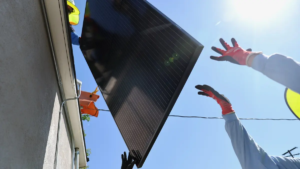EExtremely early risers will be in for a special treat this week as the moon meets two planets in a patch of sky already dotted with bright stars. The chart shows the view looking east from London at 04:00 (BST) on the morning of August 28.
By this time the planets will have climbed to a comfortable altitude, but the dawn will not yet have begun to break the darkness. The bright white beacon of Jupiter will be easily spotted, as will the waning crescent moon.
The moon will be nearly 24 days through the lunar month, and as such will have 31.4% of its visible surface illuminated.
The faint red spot of Mars will be embedded in the constellation of Taurus, the bull, with its playful red eye of Aldebaran. Betelgeuse in Orion, the hunter, forms a red triangle with these two celestial objects.
Meanwhile, a little further north, the constellation Gemini, the twins, will be easily identifiable because of its two brightest stars Castor and Pollux.
The conjunction will also be easily visible from the southern hemisphere. However, the bright stars of Gemini cannot rise enough to be visible before they succumb to the dawn light.





